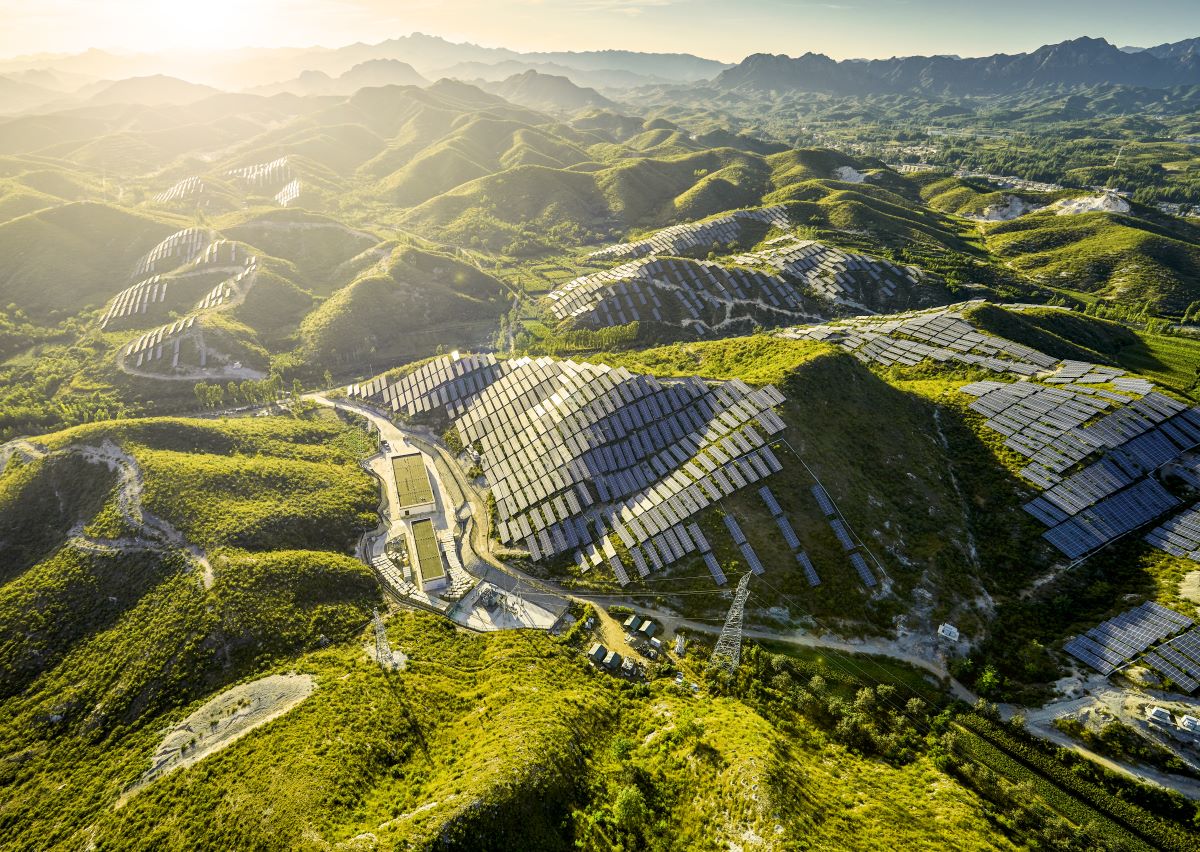China’s commitment to transitioning towards clean energy and reducing carbon emissions has created significant opportunities for investors. One way to tap into this growing sector is through China’s clean energy ETFs. These ETFs provide investors with exposure to Chinese clean energy companies, offering both financial returns and a chance to support sustainable development in the country.
Additionally, the attractiveness of this thematic investment is bolstered by the fact that the nation plays a pivotal role in the global clean energy landscape. China has the largest solar and wind energy generating capacities in the world, at 228 GW and 310 GW, respectively. The Asian powerhouse is also the largest producer of hydropower globally.
Furthermore, the country is the largest manufacturer of electric vehicles. Over 50% of global EV sales come from China. Last year, China’s investments in solar and wind energy, electric vehicles, and batteries surpassed those of the United States, totalling $546 bn.
“China is expected to remain the global leader in renewable energy over the next five years, accounting for 43% of renewable capacity growth worldwide…In 2023, China plans to add a record 160 gigawatts (GW) of capacity from clean energy sources—that’s more than the rest of the world combined in 2020,” said KransShares.
Clean energy ETFs in China boosted by country’s net-zero ambitions
Looking ahead, the Chinese government has set goals to achieve carbon neutrality by 2060 and peak carbon emissions by 2030. Also, by 2060, China aims to obtain more than 80% of its energy from non-fossil fuel sources. This, in turn, has brightened the prospects for investments in clean energy and thus China’s clean energy ETFs.
According to Global Energy Monitor, China is on track to meet its wind and solar energy target of 1,200 GW by 2025, five years ahead of schedule, due to the expected doubling of its wind and solar power capacities by that time.
All in all, China’s clean or renewable energy market is expected to grow at a CAGR of 8.7% between 2022 to 2028, as per Mordor Intelligence.
“In the last 20 years, the People’s Republic of China has strengthened its position on the global stage as an energy innovator, as illustrated by the stories of solar power and, more recently, electric mobility,” said International Energy Agency (IEA).
“Looking forward, clean energy innovation will play a crucial role to achieve China’s objectives of carbon peaking by 2030 and neutrality by 2060, and ranks among core government priorities for the 14th Five-Year Plan period (2021‑2025),” IEA added.
China clean energy ETFs
Despite the growing opportunities in China’s clean energy market, there are only a few thematic ETFs available.
Global X China Clean Energy ETF
Launched in 2020, this passive ETF (ISIN HK0000562675, HKD / HK0000562667, USD) seeks to invest in businesses that profit from the growing development and acceptance of sustainable energy sources in China, such as solar, wind, nuclear, and hydropower.
The Global X China Clean Energy ETF tracks the Solactive China Clean Energy Index NTR. Total assets under management stood at $155.37 mn. The ETF has ongoing charges of 0.68%**. Since its inception, the ETF has risen by 85.44%, compared to a 92.12% spike in the fund’s benchmark index. Along with that, it has fallen 9.99% year-to-date, while its index has fallen by 9.44% during the same period.*
Global X China Clean Energy ETF has 35 holdings**, the largest being in China Yangtze Power (11.14%), followed by Sungrow Power Supply (8.71%), China Three Gorges (5.36%), and Nari Technology (7.47%).*
Sector-wise, the ETF has the largest exposure to semiconductors & semiconductor equipment (39.71%), electrical equipment (30.88%) and independent power and renewable electricity producers (25.74%).**
KraneShares MSCI China Clean Technology Index ETF
KraneShares MSCI China Clean Technology Index ETF° (ISIN US5007678502) was launched in 2017 and has an annual operating expense of 0.78% as of July 17. The fund is benchmarked against the MSCI China IMI Environment 10/40 Index, which offers exposure to Chinese businesses that emphasise clean technology and work towards an environmentally sustainable economy.
The ETF itself includes securities that generate at least 50% of their revenue from environmentally friendly products and services. KraneShares MSCI China Clean Technology Index ETF is focused on five main environmental clean technology themes: alternative energy, sustainable water, green building, pollution prevention, and energy efficiency.
Since its inception, the ETF has seen a rise of 22.31%, whereas the benchmark has expanded by 14.82% as of June 30. The fund has $88.30 mn worth of assets under management*.
Sector-wise, the KraneShares ETF is largely invested in consumer discretionary (32.26%), industrials (27.87%), IT (25.33%), Utilities(11.60%) and real estate (1.89%).**
The top 5 holdings* of the index funds are — Nio-Adr (11.46%), Li Auto Inc-Class A (10.53%), Xinyi Solar Holdings (5.02%), Contemporary Amperex Technology (7.81%), and Xpeng-A Shares (6.53%).
*As of July 17, 2023
**As of June 30, 2023
°Formerly KraneShares MSCI China Environment Index ETF










 Australia
Australia China
China India
India Indonesia
Indonesia Japan
Japan Malaysia
Malaysia Philippines
Philippines Singapore
Singapore South Korea
South Korea Taiwan
Taiwan Thailand
Thailand Vietnam
Vietnam Germany
Germany Hong Kong
Hong Kong USA
USA Switzerland
Switzerland Singapore
Singapore
 United Kingdom
United Kingdom








